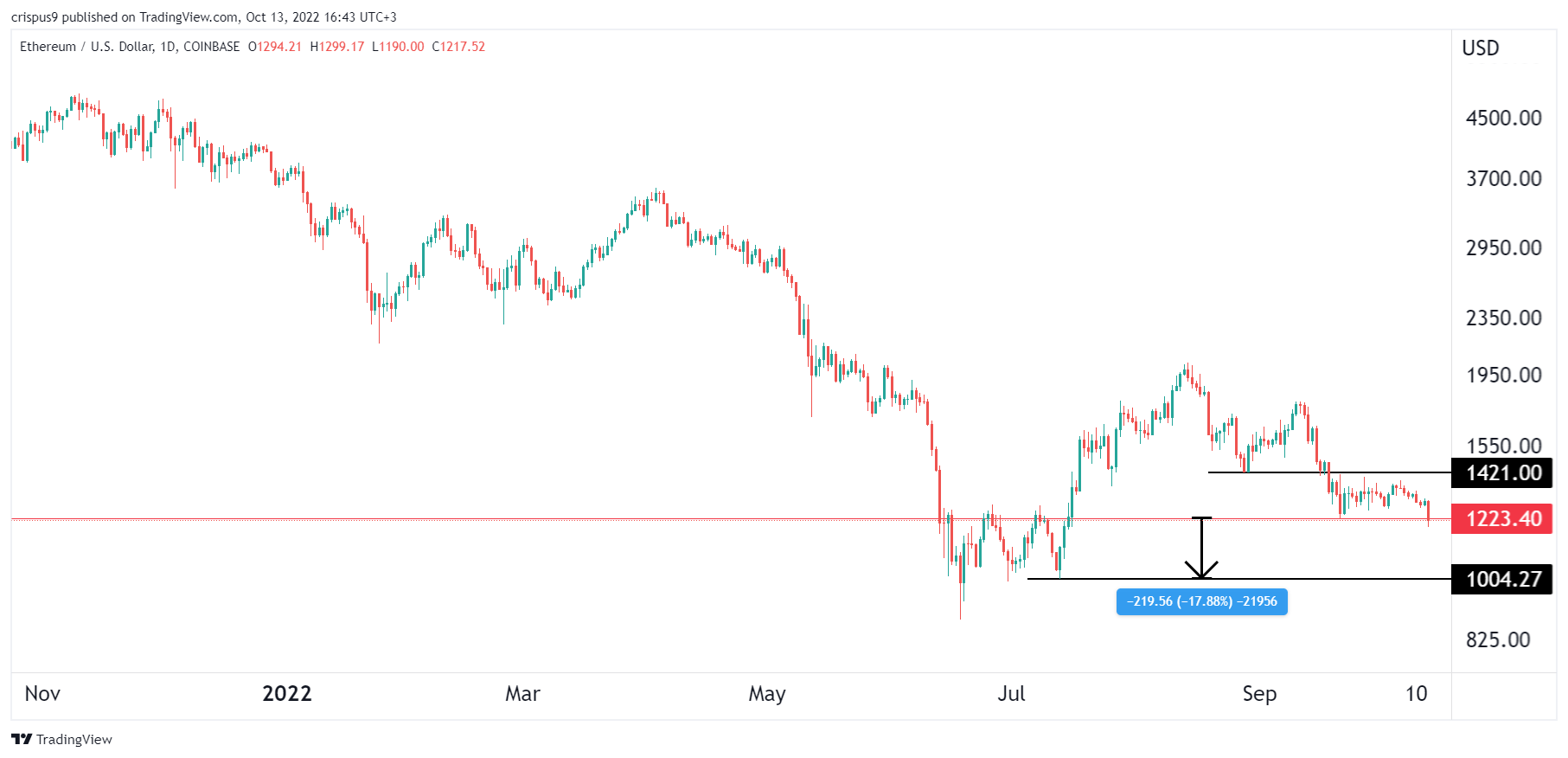A crypto clash is underway. Ethereum price crashed to a low of $1,200 on Thursday after the red-hot American consumer inflation data. The same happened for other cryptocurrencies like Bitcoin, Ripple, Solana, Kadena, and Velas have all plunged.
Red-hot US inflation data
Ethereum plunged before and after the US published the latest inflation data. The numbers showed that core inflation, which excludes the volatile food and energy prices rose by 0.6% in September. That increase was better than the median estimate of 0.5%. On a year-on-year basis, inflation rose from 6.3% to 6.6%.
Meanwhile, the broad CPI rose from 0.1% in August to 0.6% in September. This increase was also better than the median estimate of 0.2%. On a year-on-year basis, inflation rose by 8.2%.
Therefore, the crypto clash happened as investors priced in a highly aggressive Federal Reserve. Analysts now believe that the bank will hike by 0.75% in its meeting in November since inflation remains stubbornly high. It will then deliver another 0.50% or 0.75% increase in December.
The US inflation data came a day after the US published minutes of the latest meeting. These minutes showed that the Federal Open Market Committee (FOMC) was committed to hiking interest rates in the coming months.
Ethereum’s price action was in line with that of other financial assets. For example, the Dow Jones futures crashed by more than 600 points. Similarly, commodities like gold, silver, and platinum crashed as investors predicted that a recession will happen. Bond yields, which moves inversely to the price, rose to above 4%.
ETH price also declined because of a lack of a catalyst after the merge. Its DeFi ecosystem has gotten smaller while NFTs and gaming are struggling.
Ethereum price prediction

So, is it safe to buy Ethereum? The daily chart shows that the ETH price has been in a strong bearish trend in the past few months. On Thursday, it managed to crash below the important support level at $1,223, which was the lowest level on September 21. The coin moved below the 25-day and 50-day moving averages.
Therefore, the coin will likely continue falling as sellers target the next key support at $1,000, which is about 20% below the current level. A drop below that level will see it crash to the next support at $758.
